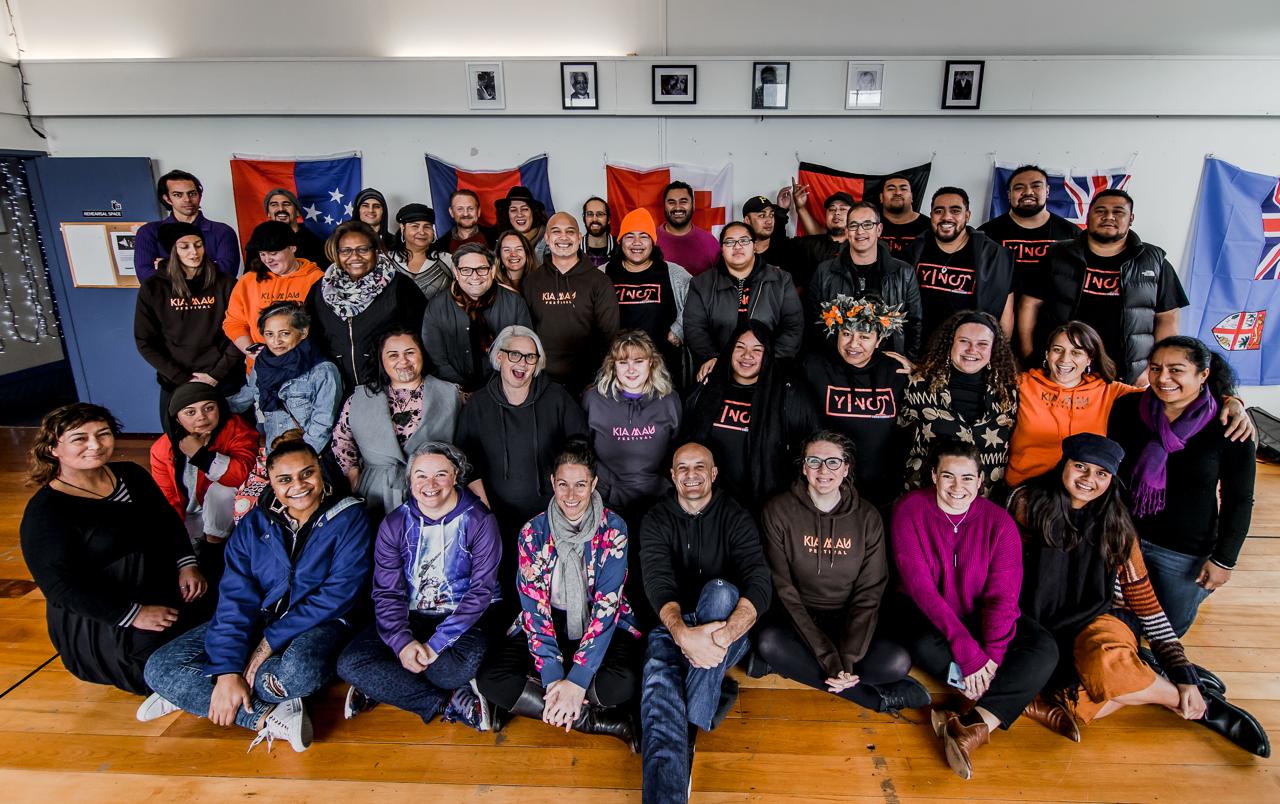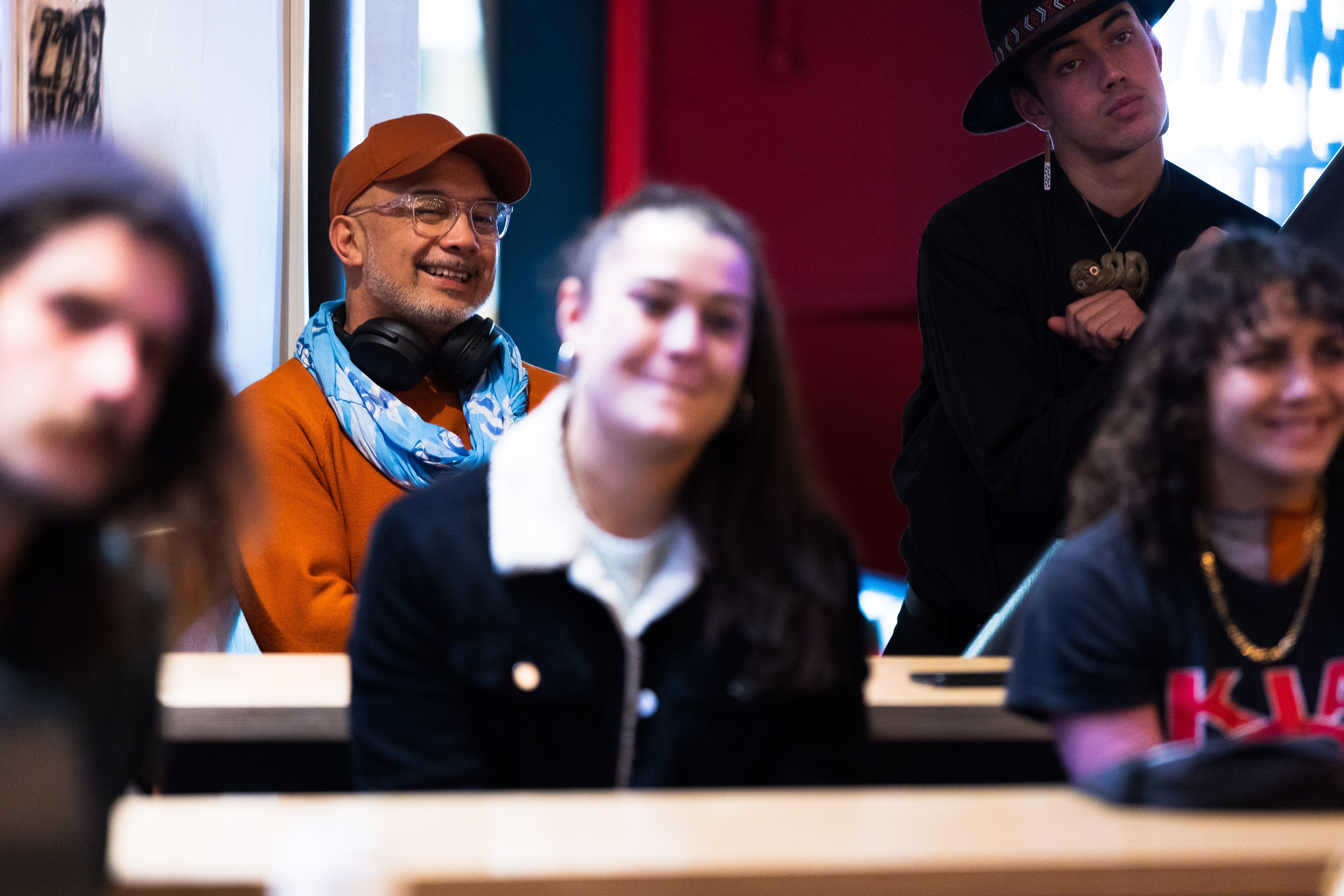Kia Mau Festival: Forging the path to Hawaiki Hou
Artist-led and Indigenous storytelling-focused, the Wellington-based festival shapes up for another empowering edition.

Take a trip around the motu as we explore arts initiatives that contribute to the cultural vibrancy of local creative communities and the wider arts ecosystem across Aotearoa in our new series – Road Trip.
Kia Mau Festival is a theatre and arts festival platforming primarily Māori, Pacific and Indigenous artists from Aotearoa and beyond.
The kaupapa of Kia Mau began in 2015, as a series of six shows brought together by a small community of artists across four main venues. It has since expanded into one of Wellington’s most beloved and reputable festivals, hosting artists from all across the world.
I sat down with the festival’s founders Hone Kouka (Ngāti Porou, Ngāti Kahungunu, Ngāti Raukawa, Kai Tahu) and Mīria George (Ngāti Kearoa, Ngāti Tuara, Ngāti Awa, Ngāti Kūki ‘Āirani) to talk about what drives Kia Mau Festival, and the impact that it’s had on artists and communities.
Kia Mau had its inception in the 1990s – what Kouka and George both described as a lush golden era for Pacific and Māori arts in Aotearoa, and more specifically in Te Whanganui-a-Tara.
Kouka was actively making work throughout this time, and built a strong reputation as an Indigenous theatre maker. This golden era ended in the early 2000s, after which it became more difficult to see Māori and Pacific theatre makers thriving in the big city.
In 2015, Kouka – fed up with the lack of Māori and Pacific works showing on the big stages in Te Whanganui-a-Tara – went door-knocking at various big venues and asked if they would give him slots to programme shows. In that first year, he organised for six Māori and Pacific shows to be shown at Te Papa, Circa Theatre, BATS and Hannah Playhouse. The kaupapa has grown rapidly since then, driven by the enthusiasm of the communities that have been drawn into its orbit.
Artists involved in that first year of shows include Dolina Wehipeihana, Jamie McCaskill, Kali Kopae and Nancy Brunning. Following on from that first year, the kaupapa evolved naturally through whanaungatanga – with each group of artists pulling in other groups of artists that they knew and respected, until it expanded into an entire festival.

Kouka and George have now been working on Kia Mau for the past ten years – sacrificing their own creative practices in service of their communities. The current name was given to the kaupapa by Hone Hurihanganui (Tūhourangi – Ngāti Wāhiao, Ngati Whakaue, Ngāti Porou, Ngāti Tāmanuhiri), who is a close friend and long-time collaborator of Kouka.
This year will mark the eighth iteration of the Kia Mau Festival. There are a total of 25 shows, including 14 new shows.
Supporting artists to create new content that is responsive to the current political moment is a huge driver for Kouka and George. So many of the shows that are programmed this year are addressing or responding to the many ongoing political struggles that Indigenous peoples face. This comes as little surprise – Indigenous artists are always right on the pulse. As Kouka says, these shows are “so potently political without even trying.”
Kia Mau Festival is truly led by the artists. By creating genuine relationships with artists, Kouka and George are fostering communities that centre the creatives as people, and prioritise their rangatiratanga and mana motuhake. This gives artists the power to bring their creative visions to life in a space that is culturally safe. This cultural safety is prioritised by the kaimahi behind Kia Mau, and extends to the actual performance of the works – with the festival attracting audiences who really resonate with the kaupapa, and who interact respectfully with performers.

Kia Mau Festival is a world of its own, created by Indigenous artists for Indigenous artists and audiences. It brings together communities to reflect on and celebrate the beauty of being Indigenous. During our kōrero, George tells me about one of her favourite memories from the past ten years:
“We were at BATS theatre in about 2021. We were between shows and Hone and I were waiting behind the office doors on the first floor… Then there was a show transition – so audiences were coming out, artists were going in, some of the artists were waiting to get into the green room. And there were a multitude of Pacific languages being spoken… like three or four Pacific languages just filled that space. And I was just like, this is literally a dream come true. This is what we want.”
This one moment perfectly encapsulates what Kia Mau Festival is really about. It brings together diverse communities of people to whakawhiti kōrero, express themselves and create stronger connections with each other.
Looking towards the future, Kouka and George are determined to pass the festival on to the younger generation by 2029. They’ve already established a succession plan and a rōpū of arts practitioners to hand the festival onto. After so many years of dedicating their time and energy to community, it’s about time that these two have the opportunity to reconnect with their own creative practices.
Te Whanganui-a-Tara is lucky to have had such dedicated people leading the charge for the past ten years. There’s no doubt that Kia Mau will continue evolving and contributing to the life of this city – and that it will keep giving artists the space to innovate and create new things. “With Kia Mau, we can’t wait for the world to catch up,” says George.
“We will forever be on the precipice of Hawaiki Hou, the new world. We just can’t sit around and wait.”

The contemporary Indigenous arts experience, Kia Mau Festival returns to Te Upoko o te ika a Māui – Wellington, Aotearoa New Zealand from 30th May to 14th June 2025.
Writer Bio: Sinead Overbye (Te Whānau a Kai, Ngāti Porou, Te Ātiawa) is a writer and editor based in Ōtaki. She currently writes for The Post, where she covers mostly Māori and Pacific arts exhibitions and kaupapa in Te Whanganui-a-Tara. She previously worked as a Kaupapa Māori Editor for The Pantograph Punch, and her creative writing has been widely published.